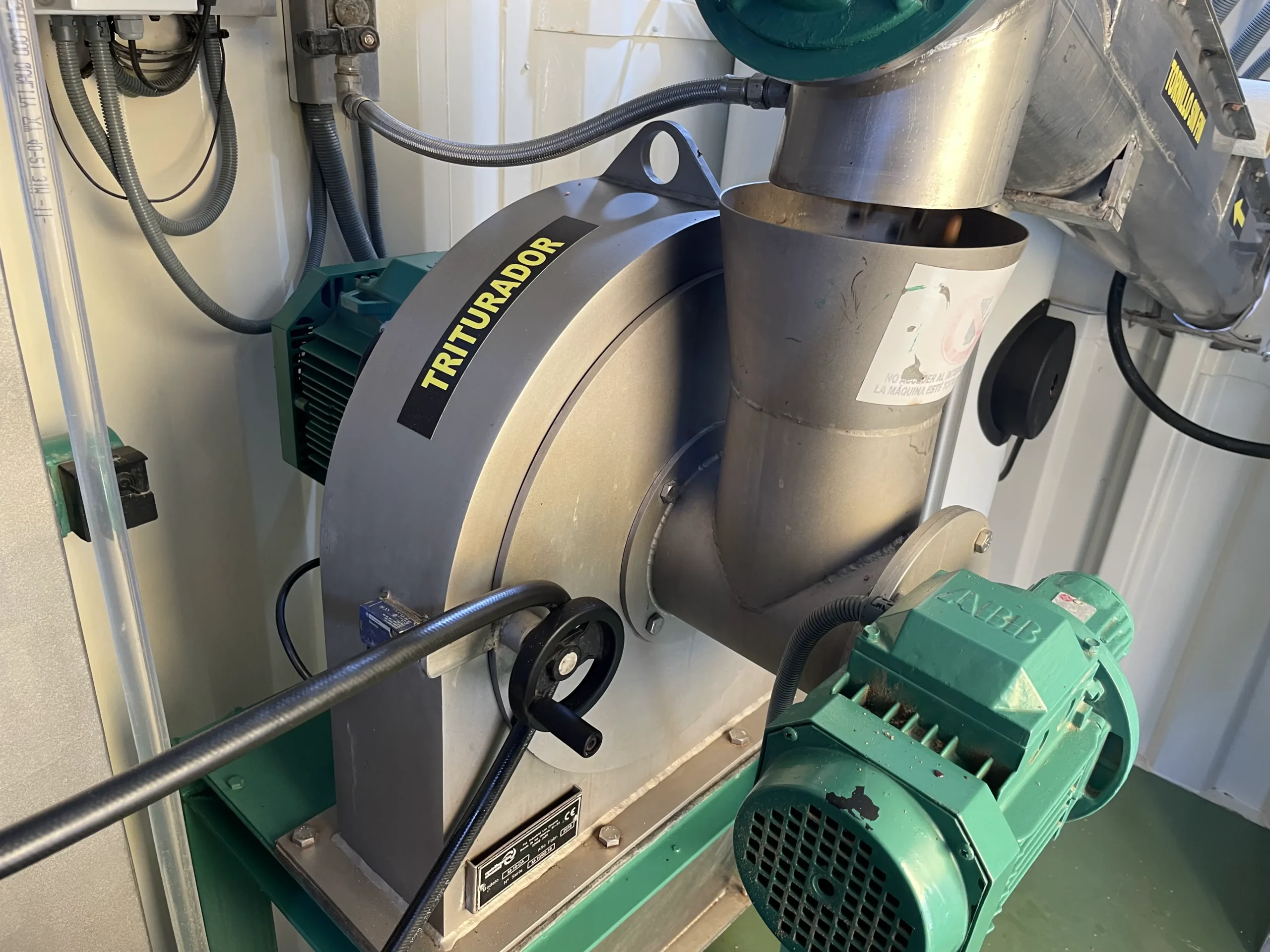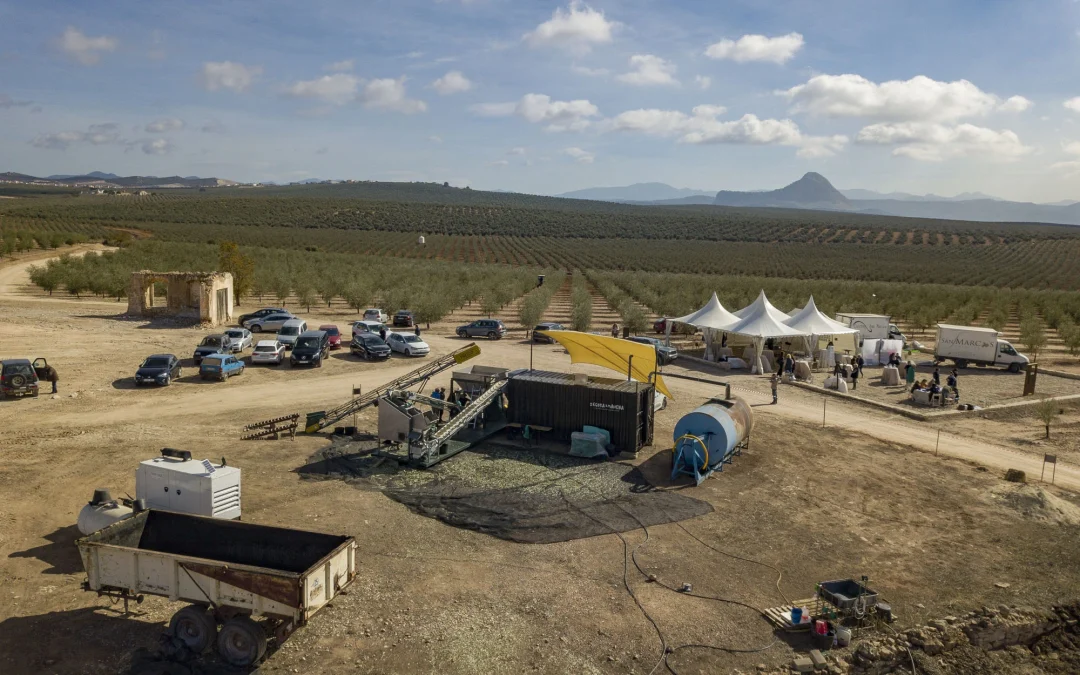
One of the characteristics that makes our olive oils unique is their freshness. Thanks to our Portable Organic Olive Oil Mill, we can extract the EVOO ‘in situ’ by taking the mill to where the olives are and not the other way round, as is conventionally done. This production model is a great effort for us but it brings great advantages.
1- Oil quality: By taking the oil mill to the olive groves, we greatly reduce the time that passes from the time the olives are harvested until they are taken to the oil mill. At Peña Luna, it takes less than an hour from the time we pick the olives until the Extra Virgin Olive Oil is extracted.
2- Sustainability: Our family owns olive groves in different regions of Malaga, Seville and Extremadura. Moving all the olives to a central mill would involve a high energy cost and CO2 emissions. For this reason, by moving the mill we also reduce our energy costs and emissions.
How is olive oil extracted?
1- Cleaning and selection.
The first step when the olives arrive at the mill is to clean them of the remains of branches and leaves. To do this, sieves and pressurised air are used.
Once the olives have been cleaned, our team removes the damaged olives that can impoverish the flavour of the oil.
2-Milling
The cleaned olives are placed in a hammer mill where they are crushed together with their pits to form a homogeneous paste. This step is crucial to release the oil contained in the cells of the olive pulp.


3- Milkshake
The paste obtained is subjected to a beating or kneading process at a controlled temperature (generally below 27ºC to obtain extra virgin oil). This process, which lasts between 20 and 40 minutes, allows the oil microdroplets to agglutinate, facilitating their subsequent extraction.

4- Extraction
Extraction Systems
There are different systems for separating the oil from the olive paste:
Traditional pressing: It uses hydraulic presses to compress the paste and extract the oil. This method is no longer used due to its lower efficiency and higher cost.
Continuous two-phase system: The pulp is centrifuged in a two-phase decanter that separates the oil and the alpechín (vegetation water and solids).
Continuous three-phase system: Similar to the previous one, but separates the oil, the alpechín and the solids separately.
Centrifugation
The oil obtained after the first extraction still contains water and impurities. To purify it, it is subjected to a second centrifugation that removes these impurities, resulting in a clean and clear oil.


5- Filtering.
Although some producers choose to market the oil unfiltered, most filter the oil to remove water and solid particles. This process ensures a more stable and better-presented final product.
6- Storage
The purified oil is stored in stainless steel tanks or in inert packaging that protects the oil from light and oxygen, two factors that can deteriorate its quality. During storage, it is kept at a controlled temperature to preserve its organoleptic properties.
Lemon Cake
Many people know yogurt cake, but very few are familiar with Extra Virgin Olive Oil cake. Get ready to enjoy a fluffy and flavourful cake using our exquisite Lemon Oil.Ingredients🥚 5 eggs🍋 Zest of one...
Salmorejo
Salmorejo is one of the culinary jewels of Andalusian cuisine, a cold soup perfect for hot summer days. This dish, originally from Cordoba, is characterised by its smooth and creamy texture, and its intense flavour, courtesy of the extra virgin olive oil...
Arbequina Variety – Olive Grove, Olive, and Oil.
The Arbequina variety is one of the most appreciated gems in the world of olive oil. Originally from the Arberca region (Catalonia, Spain), this variety has earned a special place in kitchens worldwide thanks to its smooth and fruity flavor. The tree of...






Recent Comments